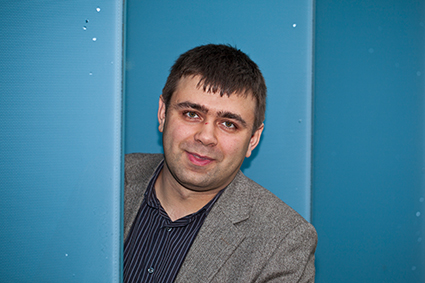Ruzicka-Prize 2013 awarded to Maksym Kovalenko
Master of the nanocrystals
Dec 10, 2013 | PETER RÜEGG
The Ruzicka Prize 2013 has been awarded to Maksym Kovalenko, ETH Assistant Professor at ETH Zurich and Empa scientist. The Ukrainian has been very successful at investigating new nanomaterials for use in electronics, optics and batteries.

|
|||
|
|||
|
|||

